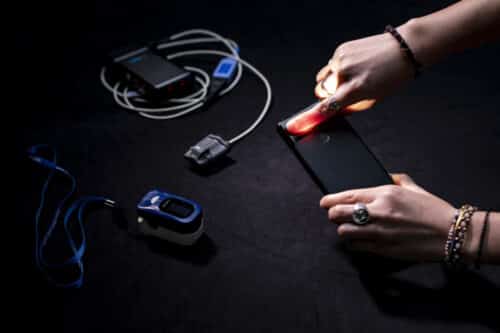A team of researchers from the University of Washington and the University of California San Diego have developed a deep learning algorithm that enables a smartphone’s camera and flash to detect blood oxygen levels at home

(Credit: Dennis Wise/University of Washington)
During COVID-19, it was very essential to monitor blood oxygen levels to detect patients with COVID-19. If the saturation levels drop below 90%, it indicated an emergency to treat patients. Continuous monitoring of blood oxygen levels at home was necessary to help patients to analyze COVID symptoms. Hence, researchers have shown that by using a smartphone camera and flash one can detect blood oxygen levels accurately. It was able to detect blood saturation levels down to 70%.
“Other smartphone apps that do this were developed by asking people to hold their breath. But people get very uncomfortable and have to breathe after a minute or so, and that’s before their blood-oxygen levels have gone down far enough to represent the full range of clinically relevant data,” said co-lead author Jason Hoffman, a UW doctoral student in the Paul G. Allen School of Computer Science & Engineering. “With our test, we’re able to gather 15 minutes of data from each subject. Our data shows that smartphones could work well right in the critical threshold range.”
The process of detection involves participants placing their finger over the camera and the flash of a smartphone. The deep learning algorithm is implemented to analyze blood oxygen levels. The researchers manipulated oxygen levels by providing subjects with a controlled mixture of nitrogen and oxygen, this artificially brought their blood oxygen levels down, and the smartphone was able to correctly predict whether the subject had low blood oxygen levels 80% of the time.
“Smartphone light can get scattered by all these other components in your finger, which means there’s a lot of noise in the data that we’re looking at,” said co-lead author Varun Viswanath, a UW alumnus who is now a doctoral student advised by Wang at UC San Diego. “Deep learning is a really helpful technique here because it can see these complex and nuanced features and helps you find patterns that you wouldn’t otherwise be able to see.”
The researchers are developing an algorithm that could potentially determine blood oxygen levels of people with different calluses and more people with different skin tones which is difficult to determine with the current device.
Click here for the Published Research Paper






